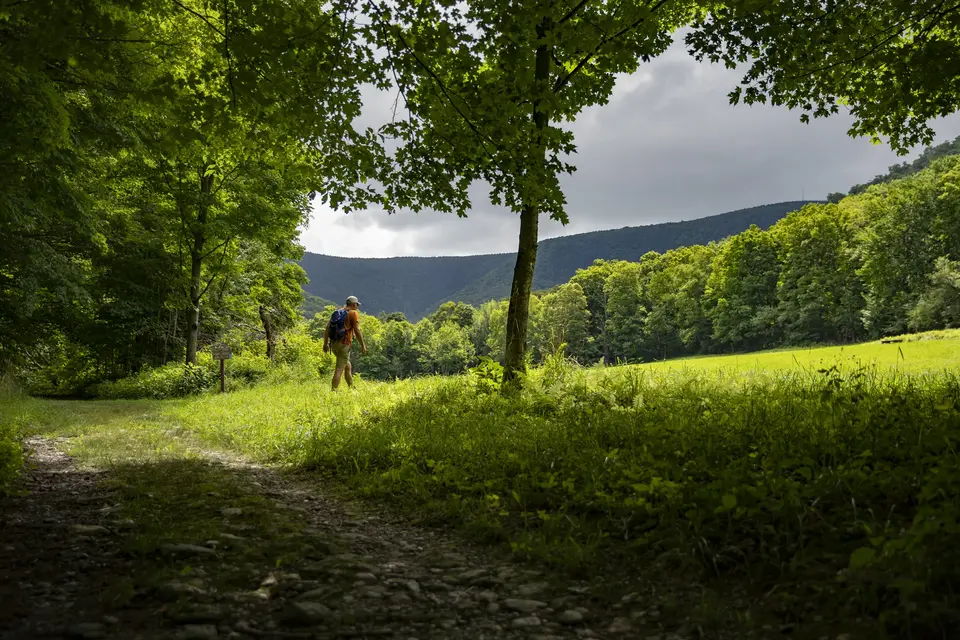
BRPC collaborated with the folks at 1Berkshire and Berkshires.org to turn the idea of this project into a successful website.
We wanted to know what success would look like for them. We started by asking their team how we can measure this project’s success if the website was already built.
The overall mission was to build awareness about outdoor recreation sites that have low visitation and to distribute the popularity of these places. To measure success, we agreed we would need to look at the number of unique visitors, the number of referrals to us, and the popular pages viewed on the website. We also wanted property managers to see an increase in visitation and usefulness of their sites.
To build a website people wanted to use, we decided to create three visitor personas:
We thought about the things they liked, their pain-points, and the information we could provide. Then we worked on the visitor journey, which is a look at what motivated the visitor to look for outdoor recreation and how our new website was first introduced to them.
We wanted to know how they might use the website, the pages they would visit, and the imagined result of their visit. We did this for each persona and the group uncovered insights that set the course for how this project was going to come together.
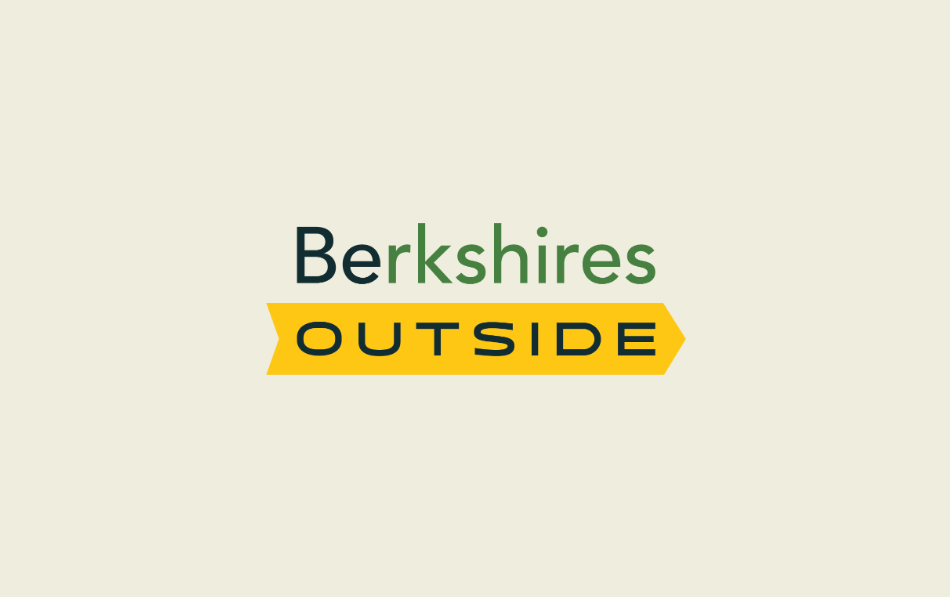

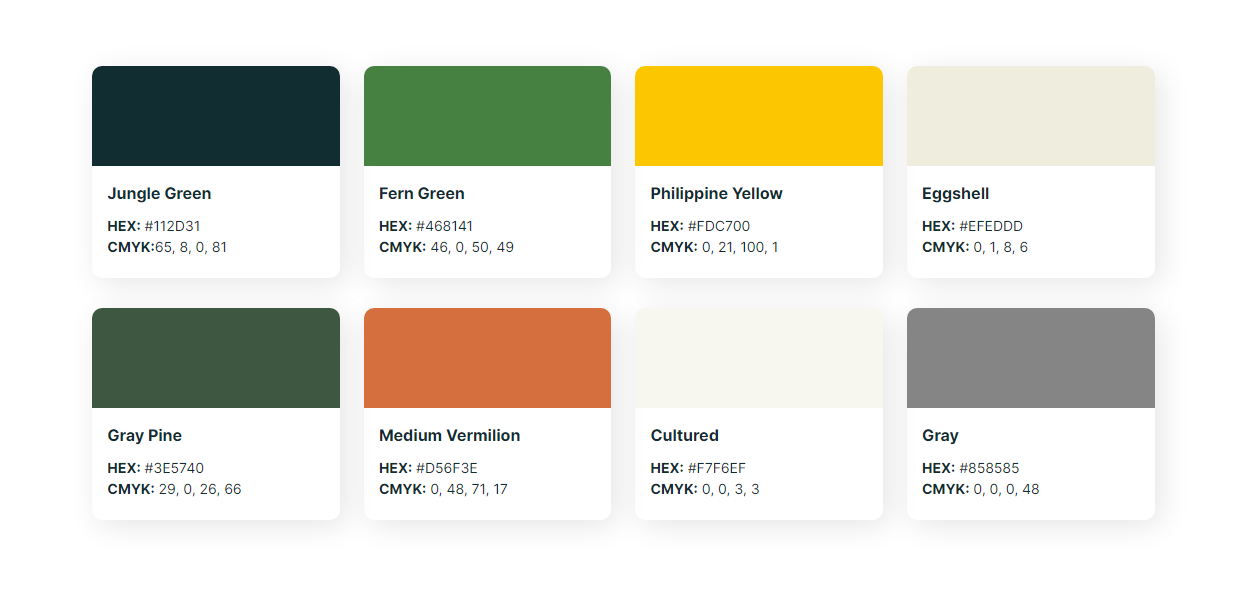
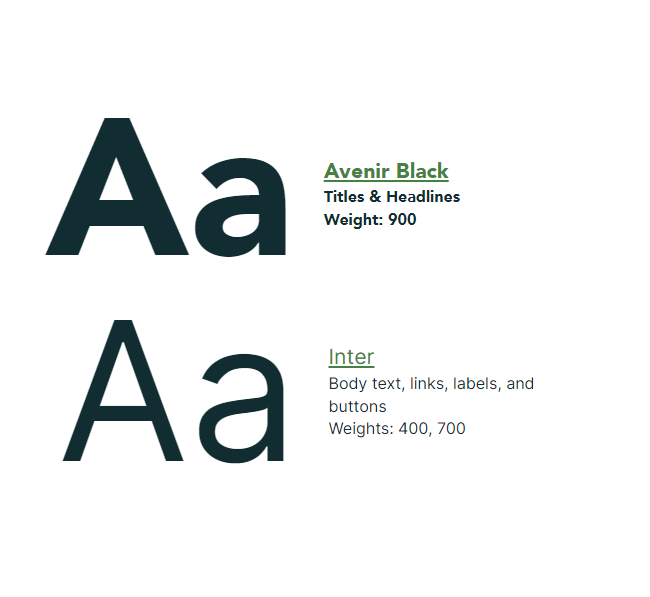
The look and feel of the new website needed to connect with people looking to explore the outdoors year-round.
We adopted a pallet of earth tones, sand and foliage, and included bright yellow and orange as accent colors.
The accompanying logo design went through a series of iterations on an idea to combine trail markers and signage with the words "Berkshires Outside". Our designer found the clever “Be Outside” which we highlighted ever-so slightly.
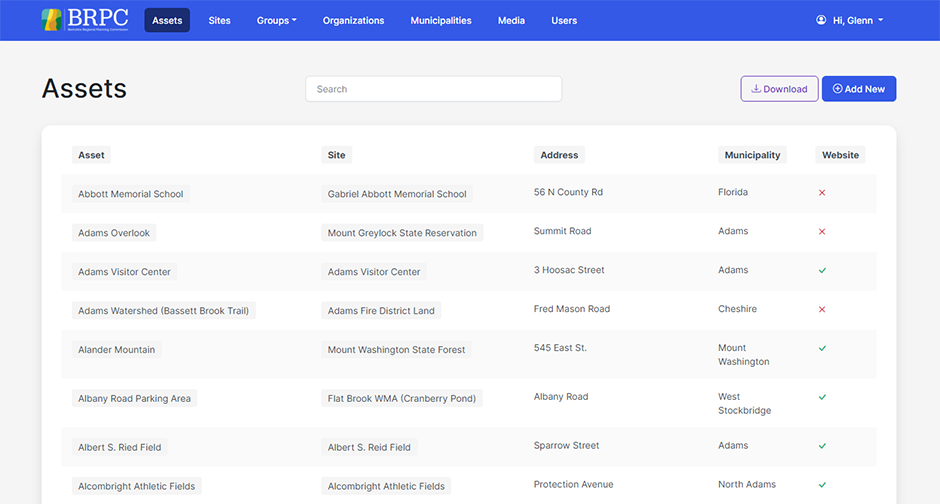
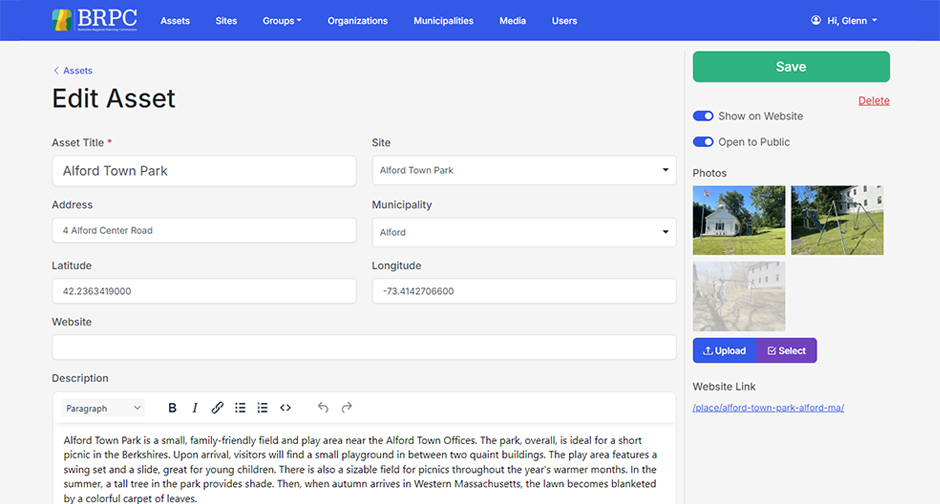
BRPC had been collecting data about every outdoor recreation spot in the Berkshires, and entering that data into a Microsoft Access database.
Every trailhead, parking spot, and amenity, including its condition, had been meticulously documented. Making this information public, and presenting it in a useful way, would require the design of a new database and a custom content management system.
We started by analyzing the data store, asked questions, and offered suggestions for improvement.
Sometimes we knew best, but other times we didn’t understand the data as well as they did. Our collaboration allowed us to complete the data analysis and start designing a new database structure that should sustain the project in the future.
We developed the corresponding custom CMS which allows BRPC staff to log in and create, read, update, and delete data as they see fit. The changes they make are live on their new website, bringing everything together.
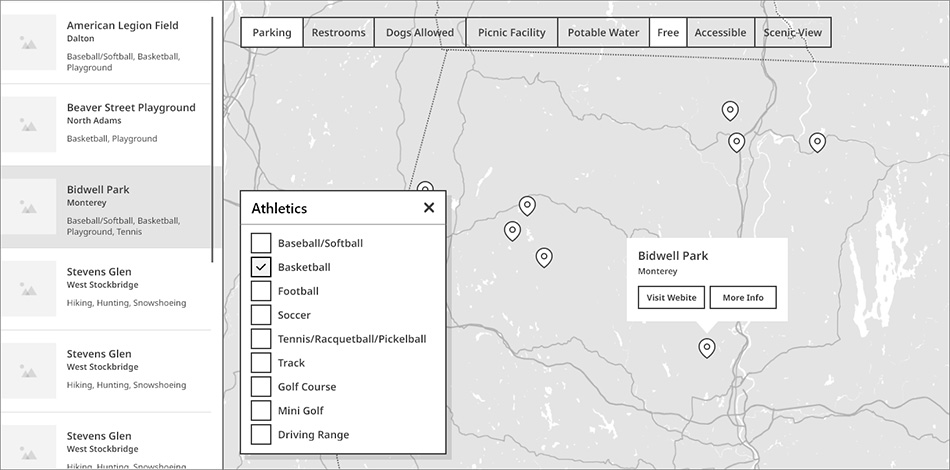
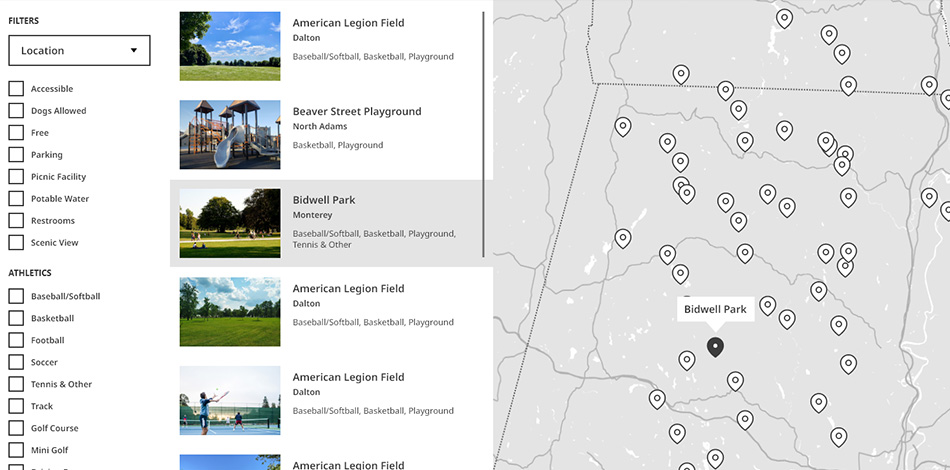
Usability was at the top of the list.
We started by looking at what others have done before us and reviewed State websites, like the City of Boulder, CO which has a simple and useful interface. We also knew we wanted an interactive map showing where these places were, so visitors could see the whole county and how near or far away places are from their location. We diagramed the important pages and discussed what each page would need. This gave everyone a sense of navigation and usefulness of the website we were going to make.
We decided on a three-column layout of filters, locations, and a map. We designed mockups for a wide monitor and for a mobile device, showing how we planned to solve the design challenges to come. With the designer, the developer, and the client in agreement, we submitted a total of 17 mockups, including menus, mobile and desktop layouts, and the different page templates we planned to build. We invite you to check out the finished design on your phone or desktop.
BRPC plotted thousands of points on the map which are interpreted as hiking trails and parkland.
This data is shown as layers on top of the interactive map, and includes locations as markers. We also added bus routes and a custom map legend to help the visitor see the area and their relationship to it.
We created a custom API connection to the database, so we can ask it questions and receive a JSON response. This allowed us to populate the website with places to visit and reuse the data to pinpoint their location on the map. This allows for interactivity between the list of locations and their corresponding map marker. The API is used throughout the website, building location pages, activity pages, and town pages with impressive speed. Try it out!
“Our website project was no small feat, and Gemini Creative has been a fantastic partner in making it happen. They truly exceeded our expectations, and the resulting product is better than we envisioned in terms of functionality and aesthetics. Glenn was easy to work with and provided thoughtful input at every step along the way. We will not hesitate to use Gemini Creative again for future website projects, and we recommend them to everyone who asks!”
Your business, your market, the way you work, the people you work with. Let’s collaborate on your project and come up with the best approach for you.